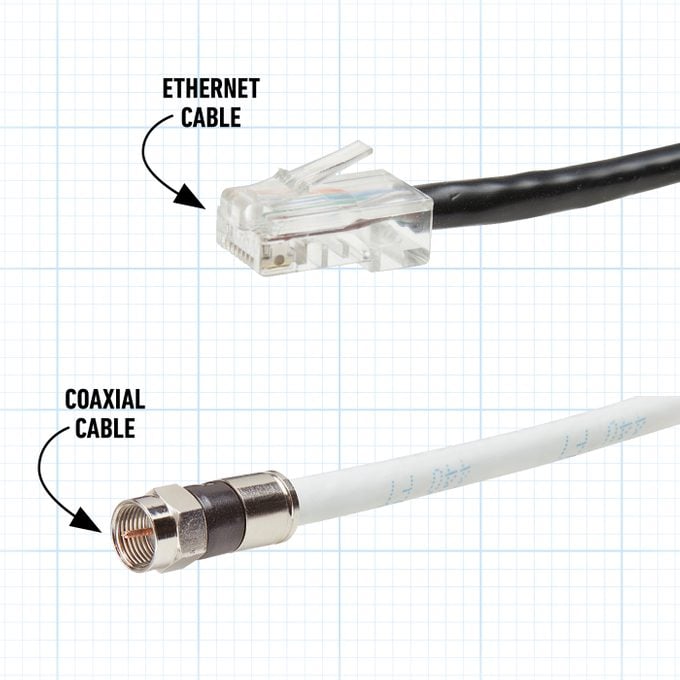In houses built before the age of streaming, it’s common to find multiple rooms set up for cable TV and ethernet, with all their cables and wires stripped across unfinished basement ceilings. But with streaming on the rise and wireless internet access increasing, cable TV cord-cutting is on the rise, and our home’s wiring needs are changing.
If you’ve never touched the junction box, don’t use cable TV, and have strong enough WiFi to skip the ethernet hookup, it might be tempting to ditch all those unsightly cords. Yes, you can remove all that coaxial cable and those ethernet wires in your walls and basement. Those wires don’t carry electricity and are generally safe to remove.
But wait. Before you begin pulling wires, think about a couple of things:
Connection Speed
First, old ethernet cables could massively increase the speed of any devices you own with an ethernet port. Compared with simple WiFi connections, a wired ethernet connection is more reliable, more secure and considerably faster — sometimes up to twice as fast. Plus, if you live in a large or multistory home, you can get better connectivity with a wired connection.
It’s important to note, though, that if your ethernet cable is too old it may not be able to keep up with modern internet technology. Cat6 ethernet cables, the current standard, can support data transfer speeds up to 10Gbps (gigabytes per second.) Older Cat5 and Cat5e ethernet cables won’t be able to support such high speeds. If you’re trying to connect a device to a blazing fast internet connection, make sure you aren’t limiting that connection by using an out-of-date cable.
Power Over Ethernet
Second, there’s a thing called “power over ethernet” (PoE), and it may be applicable in your home. Through PoE, power and data communication are delivered through one cable. It’s not new technology, but it hasn’t reached mainstream homeowner status yet.
PoE could be used to power a newer TV, a videoconferencing system or a security camera. It’s likely to gain popularity in office buildings and schools, and it could also come to your home. But it’s limited in the amount of current it can transmit. Standard Cat5, an older but common version of ethernet cable, can handle up to 100 watts. You’ll need a PoE Injector or other equipment, plus a knowledgeable installer.

Ethernet Over Coax
And that coax cable? It could have value in the future if you decide to sell your home. You can also run “ethernet over coax” with an adapter. Coax wiring can handle high-bandwidth video signals, and that’s useful for online gaming, videoconference calls and more. Look for an EoC or a MoCA (multimedia over coaxial alliance) adapter.
You may not be using these cables now, but consider yourself lucky to have them. Many homeowners don’t.
Article source here: Why You Shouldn’t Get Rid of Your Old TV Cables


No comments:
Post a Comment